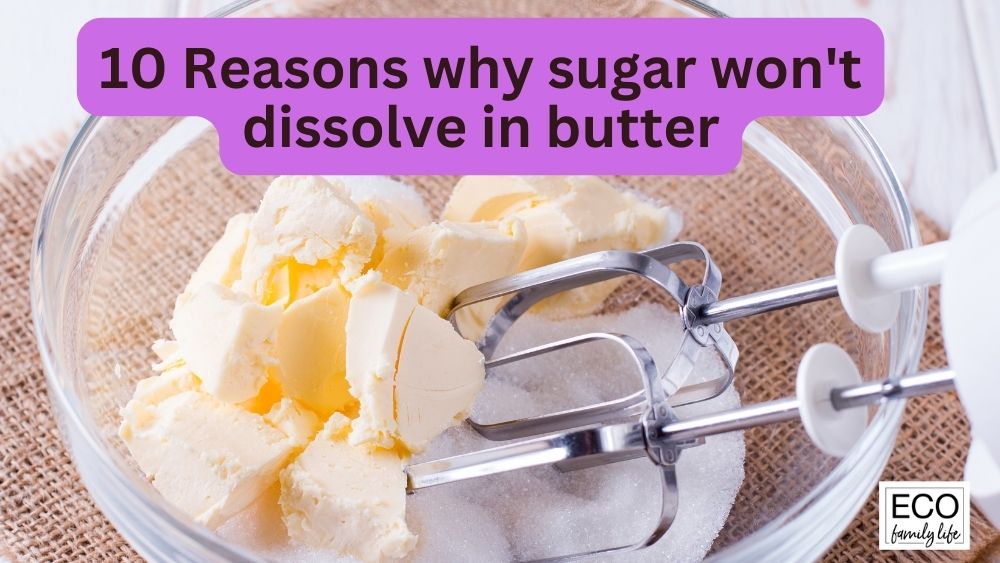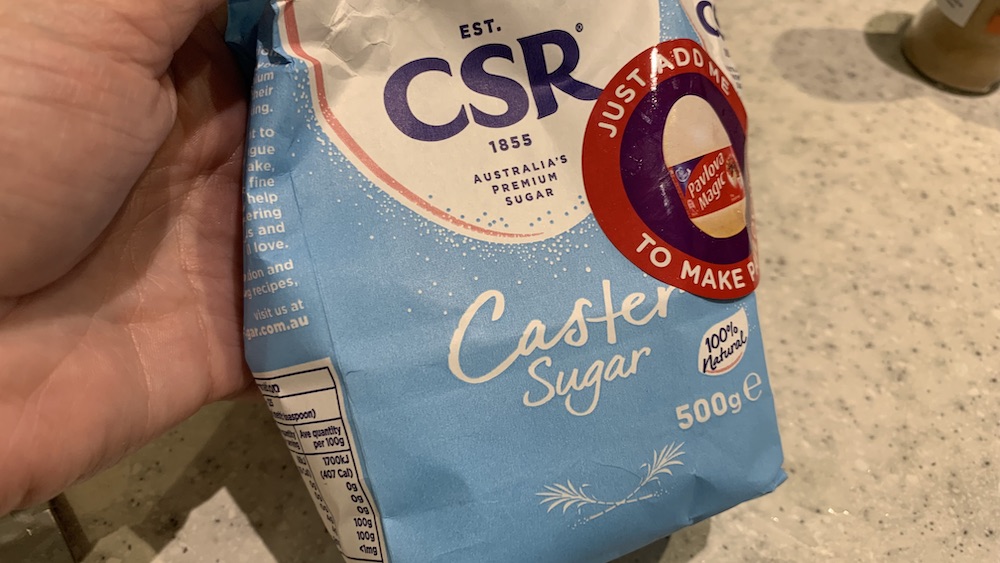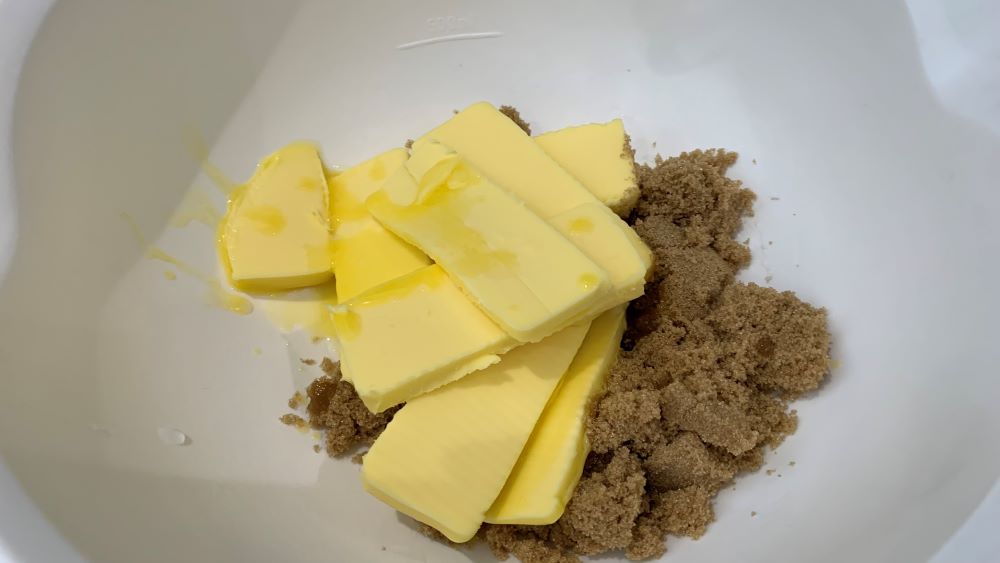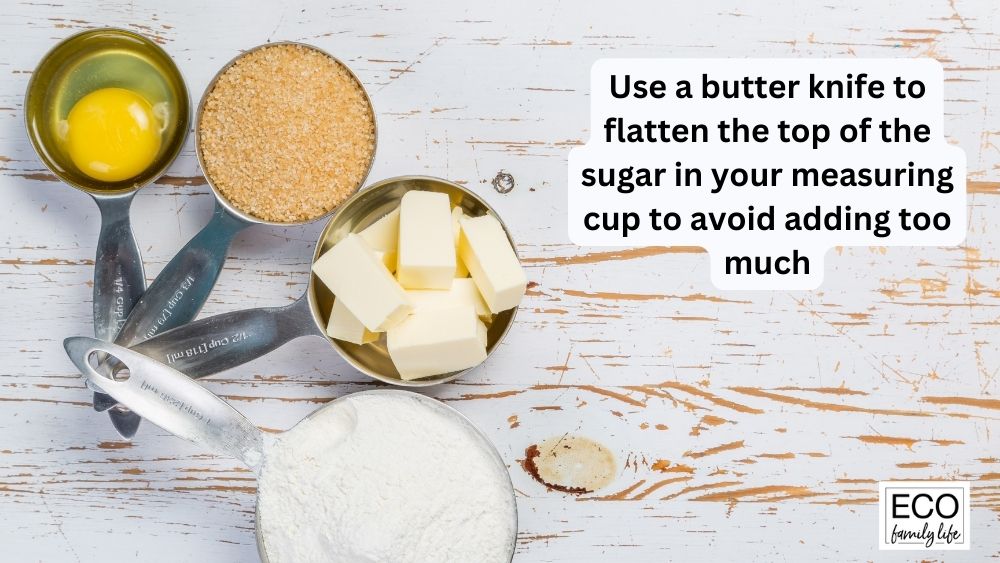Sugar will not dissolve in butter if the butter is too cold, if you are using granulated sugar, if the mixing is too slow or for not long enough or if the ingredients are over-mixed. To help the sugar to dissolve easily into the butter let the butter come to room temperature and use bakers or superfine sugar.
This article will explore the top 10 reasons why sugar is not dissolving into the butter and what to do to fix each one.

1. Cold butter
If the butter is too cold, it can prevent sugar from dissolving properly. It is ideal if the butter is close to room temperature 68-72 degrees Fahrenheit. Just take the butter out of the fridge 30-60 minutes before you want to use it.
Even if the butter is not quite at room temperature you can continue to mix it with a hand or stand mixer. This will gradually increase the temperature and allow the sugar to incorporate.
2. Granulated sugar
Using granulated sugar will make it harder for it to incorporate into the butter. Granulated sugar is in larger granules than powdered, bakers or superfine sugar. This is also known as caster sugar.
Fine sugar will quickly mix into the butter. Look out for when the butter turns to a light color, looks creamy and has a smooth texture. Whipping the butter and sugar will incorporate air into the mixture making your cake lighter.

3. Slow mixing
If the butter and sugar are not mixed fast enough, the sugar may not dissolve properly. This can happen if you are trying to mix your butter and sugar together by hand. For the most efficient way to mix butter into sugar use a stand mixer with a K paddle.
This will mix the sugar into the butter and add air. A K paddle generally works better than a ballon mix where the butter can get stuck in the center and not mix properly.
4. Not mixing for long enough
Not mixing the butter and sugar for long enough can mean that the sugar won’t fully dissolve and your baking could taste grainy. It usually takes 5-10 minutes to fully incorporate the sugar into the butter.
Take the time to fully mix the sugar and butter together. Rub the butter and sugar between your fingers and keep mixing until you can no longer feel the sugar grains.
Properly creaming the butter and sugar is crucial for achieving a smooth texture and allowing the sugar to dissolve. Rushing the process can leave your cookies or cake grainy

5. Over-mixing
Strangely, if the butter and sugar are mixed for too long, the sugar can become overworked and it will not dissolve properly. The butter can start to separate, change color or melt completely. This can lose the air from the mixture and could make the cookies and cake taste chewy rather than light.
Stop mixing the butter and sugar together once the sugar has dissolved. The butter should look light and fluffy. The color will be darker if you use brown sugar instead of white.

6. Clumping sugar
If you leave your sugar out uncovered or not in an airtight container it can absorb moisture from the air to form clumps. Low-quality sugar can also contain large crystals or clumps that make it more difficult to dissolve in butter.
To avoid this use sugar that has been freshly bought or kept in an airtight container. To make sure that it white sugar does not contain clumps, run it through a sieve. For brown sugar you can break up the clumps with a spoon or fork before adding it to your butter.
7. High humidity
In humid conditions, sugar can absorb moisture from the air and become clumpy, making it harder to dissolve in butter. This can happen quickly even with sugar that has only been open for a few days.
To avoid this move your sugar straight into an airtight container from the packet. This could be plastic, glass or metal. Store the container in a cool, dry place and it will be easier to mix through your butter.
8. Using different sugars
Different types of sugar such as white, brown, and powdered have different properties and may not dissolve the same way in butter. It is important to use the type of sugar specified in the recipe as they will adjust the method to make sure that it blends properly.
Most cake and cookie recipes will use bakers or fine sugar to make it easier to mix in with butter. Brown sugar will need to be mixed for longer to get it to become smooth and well incorporated.
Icing sugar is usually mixed gently with a spoon first otherwise it will spread far and wide with a mixer because it is so light.
9. Too much sugar
If there is too much sugar in a recipe, it may not be able to dissolve properly in the butter. Making sure that you measure the sugar accurately is important.
I like to use kitchen scales to measure out all of my baking ingredients. This makes it easier to get the exact amount. If you are using cup measures, make sure you flatten the top across the cup with a knife so that you don’t add too much.

10. Sugar added too late
If sugar is added too late in the mixing process, it may not have enough time to dissolve properly. Most of the time you will be creaming the butter and sugar first but if you start with dry ingredients it will be harder to get the sugar to incorporate.
Most of the time it is best to start with a clean bowl and cream the butter and sugar first. This way you can make sure that the sugar has fully dissolved before adding other ingredients. After this you can other wet ingredients such as eggs, milk or vanilla.
I like to mix the dry ingredients separately and then add them all at once to the wet ingredients to avoid losing air from the butter and sugar and avoid over-mixing.
How to know when the sugar has properly mixed into the butter
To know that your butter and sugar have fully mixed together look out for:
- A light color
- A smooth texture when you rub the butter in between your fingers
- A light and fluffy texture.
Why sugar won’t dissolve in butter | Summary
Whipping together sugar and butter first is the best way to make sure the sugar has fully dissolved and to incorporate air into your recipe. This is easier if the butter is at room temperature, your sugar is fine and sifted and if you use a k-paddle on a stand mixer.
Taking the time to properly mix the sugar into the butter will give you a light and fluffy cake, a delicious cookie or a yummy loaf of banana bread.
Happy cooking.
I am an accredited practicing dietitian, experienced gardener and a dedicated cook. I love writing and sharing my experience so you can learn from my successes and mistakes.
